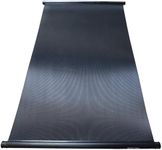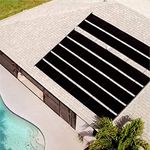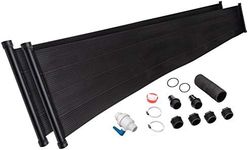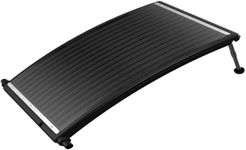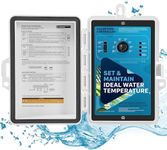Buying Guide for the Best Solar Pool Heaters
Choosing a solar pool heater is a smart way to extend your swimming season and save on energy costs. The right heater will depend on your pool size, climate, and how warm you want your water. When shopping, focus on the main features that affect performance, durability, and ease of use. Understanding these key specifications will help you find a heater that matches your needs and ensures you get the most out of your investment.Collector Size (Surface Area)The collector size refers to the total surface area of the solar panels that capture sunlight to heat your pool water. This is important because the larger the collector, the more sunlight it can absorb, and the more efficiently it can heat your pool. Collector sizes are usually measured in square feet or meters. For small pools or mild climates, a smaller collector may be enough, while larger pools or cooler climates will need a bigger collector. To pick the right size, consider your pool's surface area and how much you want to raise the water temperature. A good rule of thumb is that the collector area should be 50-100% of your pool's surface area, with larger percentages needed for cooler climates or if you want warmer water.
Collector TypeSolar pool heaters use different types of collectors, such as unglazed (plastic or rubber) or glazed (glass-covered) panels. Unglazed collectors are more common and cost-effective, suitable for most residential pools in warm to moderate climates. Glazed collectors are more efficient and durable, especially in colder climates or for year-round heating, but they are also more expensive. Choose unglazed collectors if you live in a warm area and only use your pool in the summer. Opt for glazed collectors if you want to use your pool in cooler weather or need more efficient heating.
Flow RateFlow rate is the amount of water that passes through the solar heater per minute or hour, usually measured in gallons per minute (GPM) or liters per hour (LPH). This affects how quickly your pool heats up and how efficiently the system works. A higher flow rate can heat the pool faster but may reduce the water's exposure time to the sun, while a lower flow rate increases exposure but may take longer to heat the pool. The ideal flow rate depends on your pool size and pump strength. Make sure the heater you choose matches your pool pump's capacity and your desired heating speed.
Installation TypeSolar pool heaters can be installed on the ground, on a roof, or on a rack. The installation type affects how much sunlight the collectors receive and how easy the system is to maintain. Roof installations save space and often get more sun, but may be harder to access for maintenance. Ground or rack installations are easier to reach but require available space and may need to be positioned carefully for maximum sun exposure. Choose the installation type that fits your available space, sun exposure, and maintenance preferences.
Durability and MaterialsThe materials used in the solar heater affect its lifespan and resistance to weather, pool chemicals, and UV rays. Look for collectors made from UV-resistant plastics or high-quality metals, and check for warranties that indicate long-term durability. If you live in an area with harsh weather or plan to use the heater for many years, prioritize models with strong, weather-resistant materials. For milder climates or seasonal use, standard materials may be sufficient.
Control and Automation OptionsSome solar pool heaters come with manual or automatic controls to regulate water temperature and flow. Automation can make it easier to maintain your desired pool temperature without constant adjustments. If you prefer a set-and-forget system, look for heaters with built-in thermostats or compatibility with pool automation systems. If you don't mind adjusting settings yourself, a manual system may be enough.

